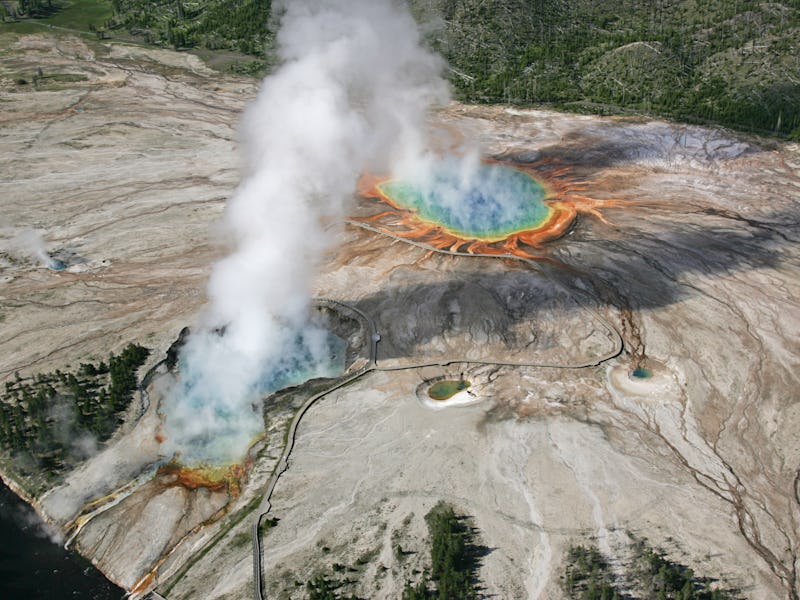Is the Yellowstone Volcano a Supervolcano or Caldera? (It's Both)
Fear the "super" part of their moniker.

Last week’s earthquake in western Montana was the strongest earthquake in the region in 60 years. An initial quake set off 10 smaller earthquakes, with people as far west as Seattle and as far north as Canada reporting feeling tremors. Even though this 5.8-magnitude quake was comparatively mild (just strong enough to move heavy furniture), scientists and residents near Yellowstone National Park were on edge: Was the legendary Yellowstone supervolcano about to explode?
First things first: Contrary to multiple fake news reports, the Yellowstone supervolcano remains dormant and quiet. But residents and scientists had every reason to fret, mostly because the Yellowstone supervolcano is actually a caldera.
A supervolcano is not just a big volcano. It occurs when magma continues to rise to the Earth’s crust but is unable to escape, kind of the way pressure cookers trap steam. And just like the way a pressure cooker’s top shoots up when it can’t contain steam any more, a supervolcano explodes when it can’t stifle the pressure of magma any more.
What makes the Yellowstone supervolcano especially dangerous is the fact that it’s not actually a volcano but rather a caldera. Unlike the classic cone-shaped volcanos we normally model our childhood science projects on, calderas are actually inverse volcanoes, looking more like crater-shaped, sunken volcanos.
Supervolcanoes are especially devastating because of the river of lava that pours out in a short amount of time. For a normal volcano, this lava can be contained within the surrounding valley, but for a caldera, exit points collapse, flooding surrounding areas with lava and ash instead of being held within a valley of a traditional volcano.
Not all calderas are supervolcanoes, however — they can be, otherwise, benign and boring. But calderas that double as supervolcanoes are a deadly force. The wider the caldera, the heavier the flow of lava, and the more devastating the consequences.
The 30 by 45 mile Yellowstone Caldera is made of three eruptions.
For its part, the Yellowstone Caldera is roughly 30 miles long and 45 miles wide, which is considered pretty gigantic, mostly because it is the result of three eruptions. Researchers with the United States Geological Survey were able to trace out caldera boundaries by looking at the rock formations: The first caldera formed 2.1 million years ago and erupted 600 cubic miles worth of magma; the second caldera formed 1.3 million years ago with 67 cubic miles of magma; and the third formed 640,000 years ago with 240 cubic miles of magma.
Researchers consider the Yellowstone Caldera a supervolcano because of how big the eruptions are. Based on the volcanic exclusivity index, any volcano that produces 240 or more cubic miles of magma is considered a supervolcano. On top of the large eruptions, researchers also believe that the supervolcano could have magma stored in chambers more than 600 miles deep, with some scientists speculating that these chambers could run as deep as 1,800 miles.
Old Faithful, one the geysers at Yellowstone National Park, is relieving pressure from the supervolcano.
Luckily, most of the pressure from the Yellowstone Caldera is released as hot water through geysers and hot springs, most famously through hot spurts of water like that of Old Faithful. The magma heats the groundwater above it, building pressure before shooting out hot water at an average height of 130 feet in the air.
The good thing about volcanos as big as the Yellowstone Caldera is that they don’t erupt often. Researchers estimate that volcanos of that size only burst every 10,000 to 100,000 years, and they can see signs of possible eruptions in advance, such as an increase in earthquakes and changes in the land formations. And as of now, researchers don’t see any imminent signs of a super-eruption anytime soon.